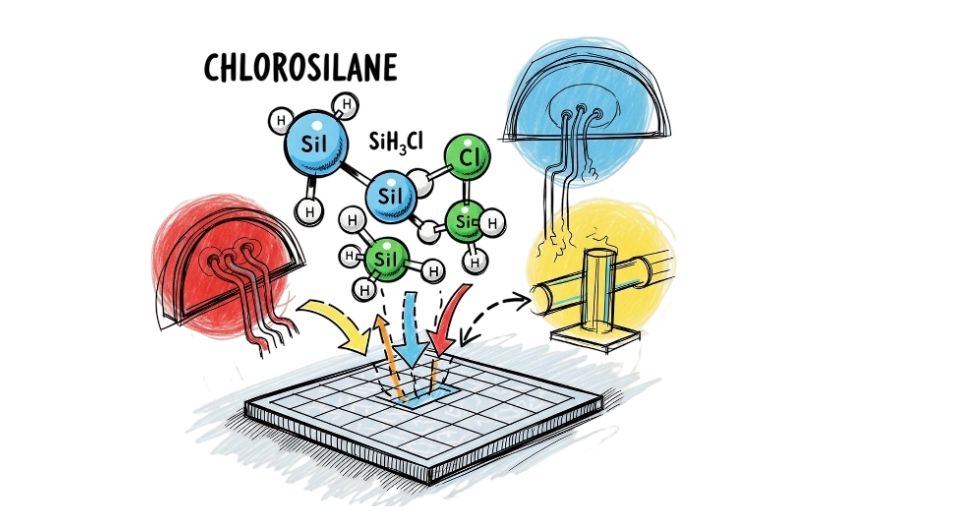
Aug 04, 2025

The newly published report on the Global Chlorosilane Market by Metastat Insight provides a in-depth analysis of the driving forces behind this specialized industry, illuminating its path with a focus that is at once purposeful and penetrating. Chlorosilane, being a specialized chemical in itself, plays in a very delicate part of industrial materials, tied with high-purity silicon manufacturing and downstream uses such as semiconductors and optical fibers. Instead of presenting a wide brush of generalities, the report targets the dynamics that actually characterize the present and future state of this market.
The Global Chlorosilane Market is situated at an intersection where accuracy, volatility of demand, and technological fit come together. Its position in the bigger picture of chemical manufacturing confers upon it a function that, though not always perceptible to the wider public, is foundational to a number of high-tech industries. The worth of chlorosilane is not so much in its chemical composition as in the sophistication involved in its management, transport, and processing into intermediate or end-products. These needs form a bespoke ecosystem that has evolved through time and continues to evolve to suit an assortment of industrial and regulatory environments.
This market does not act alone. The manufacture and commerce of chlorosilane are strongly interwoven with infrastructure providing ultra-clean processing space. Over the last few years, some changes in world supply chains have had subtle but quantifiable impacts on its streams of operation. These have resulted from geopolitical choices as well as realignments of world manufacturing hubs and have caused a reordering of sourcing practices. Whereas previously, the concentration was tight, now the dispersion is tight, and there is a need for stakeholders to review cost, quality management, and risk management practices.
Interestingly, the Global Chlorosilane Market shows a unique trend in the way it works with material science developments. With the demand for higher purity and tighter quality specifications in silicon-based uses, chlorosilane manufacturers are now operating within a tighter margin for error. Steps formerly routine are being reengineered or phased out in favour of more controlled and sustainable ones. This shift has steadily rewritten the standard for acceptable performance in chlorosilane manufacture and handling, with associated new procedures, investment, and technical competencies.
There is also a developing theme of environmental stewardship that quietly runs as a thread through the operational behaviour of the market. Although chlorosilane itself is reactive and needs to be carefully handled, the wider examination of emissions, waste, and safety procedures is forcing companies to rethink earlier systems. Prevention of leakages, safety for workers, and closed-loop recycling have moved from being operational afterthoughts to flagship considerations in corporate strategy. The readiness of producers to innovate in this direction depends largely on the degree of maturity and vision inherent in their organizational frameworks.
Regulatorily, the Global Chlorosilane Market is confronted with a patchwork of standards and compliance mechanisms that remain very disparate across regions. This incongruity causes logistics and strategic complications for firms operating in more than one jurisdiction. Yet, in that complexity is the potential for standard-bearers to establish new industry standards for others to adopt, particularly as traceability and environmental transparency become increasingly significant. In so doing, while slow to come, the alignment promises a day when chlorosilane production and trade can be advantageously subject to more unified control.
The influence of partnerships and extended supply arrangements also has a long reach over the present market environment. As a result of the volatility and sensitivity of chlorosilane operations, most firms have inclined towards more intimate collaboration instead of transactional transactions. This trend promotes stability as buyers and sellers can plan with more confidence and invest in process development without worrying about abrupt market withdrawal or inconsistency in quality. Trust has thus become a soft but hard currency for this tightly managed environment.
No less crucial is the human capital underpinning the Global Chlorosilane Market. The know-how necessary to handle the substance safely and effectively cannot be readily replicated. Trained technicians, process engineers, and quality control staff are the backbone of this industry. Their seniority frequently dictates not just continuity in operations but also the capacity to innovate within safety bounds. The nurturing and retention of such talent are therefore becoming a strategic imperative for firms to secure long-term resilience.
Innovation, though frequently glacial given the high stakes, does occur in sectors like reactor design, emission capture systems, and computerized process monitoring. Incremental advances in these areas build to larger operational benefits, increasing efficiency and reducing downtime. These advancements are less flash-oriented and more a function of the relentless efforts to turn industrial art into science—a trait that drives much of the advancement in this market.
In highlighting these themes, the new perspective offered by Metastat Insight with regard to the Global Chlorosilane Market brings a precision not usually found in wider industry commentary. By avoiding generalization and instead concentrating on the industry's unique attributes, the report is as much a source of intelligence as a commentary on the cautious progress that this market continues to make. Its destiny will not be charted through abrupt bounds, but through constant calibration—a dynamic encapsulated with care and precision throughout the publication.
Drop us an email at:
Call us on:
+1 214 613 5758
+91 73850 57479